armed forces
Canadians are finally waking up to the funding crisis that’s sent the Canadian Armed Forces into a “death spiral”
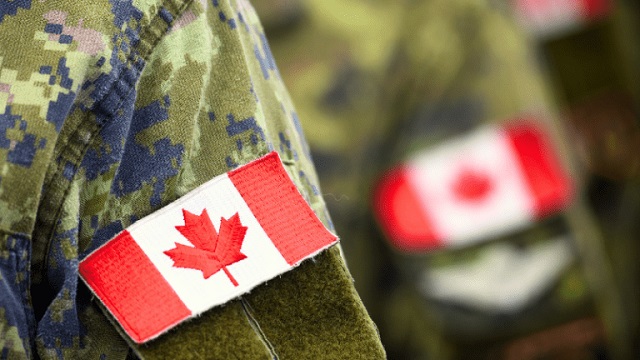
From the Macdonald Laurier Institute
By By J.L. Granatstein
Must we wait for Trump to attack free trade between Canada and the US before our politicians get the message that defence matters to Washington?
Nations have interests – national interests – that lay out their ultimate priorities. The first one for every country is to protect its population and territory. It is sometimes hard to tell, but this also applies to Canada. Ottawa’s primary job is to make sure that Canada and Canadians are safe. And Canada also has a second priority: to work with our allies to protect their and our freedom. As we share this continent with the United States, this means that we must pay close attention to our neighbouring superpower.
Regrettably for the last six decades or so we have not done this very well. During the 1950s, the Liberal government of Louis St. Laurent in some years spent more than 7 percent of GDP on defence, making Canada the most militarily credible of the middle powers. His successors whittled down defence spending and cut the numbers of troops, ships, and aircraft. By the end of the Cold War, in the early 1990s, our forces had shrunk, and their equipment was increasingly obsolescent.
Another Liberal prime minister, Jean Chrétien, balanced the budget in 1998 by slashing the military even more, and by getting rid of most of the procurement experts at the Department of National Defence, he gave us many of the problems the Canadian Armed Forces face today. Canadians and their governments wanted social security measures, not troops with tanks, and they got their wish.
There was another factor of significant importance, though it is one usually forgotten. Lester Pearson’s Nobel Peace Prize for helping to freeze the Suez Crisis of 1956 convinced Canadians that they were natural-born peacekeepers. Give a soldier a blue beret and an unloaded rifle and he could be the representative of Canada as the moral superpower we wanted to be. The Yanks fought wars, but Canada kept the peace, or so we believed, and Canada for decades had servicemen and women in every peacekeeping operation.
There were problems with this. First, peacekeeping didn’t really work that well. It might contain a conflict, but it rarely resolved one – unless the parties to the dispute wanted peace. In Cyprus, for example, where Canadians served for three decades, neither the Greek- or Turkish-Cypriots wanted peace; nor did their backers in Athens and Ankara. The Cold War’s end also unleashed ethnic nationalisms, and Yugoslavia, for one, fractured into conflicts between Serbs, Croats, Bosnians, Christians, and Muslims, leading to all-out war. Peacekeepers tried to hold the lid on, but it took NATO to bash heads to bring a truce if not peace.
And there was a particular Canadian problem with peacekeeping. If all that was needed was a stock of blue berets and small arms, our governments asked, why spend vast sums on the military? Peacekeeping was cheap, and this belief sped up the budget cuts.
Even worse, the public believed the hype and began to resist the idea that the Canadian Armed Forces should do anything else. For instance, the Chrétien government took Canada into Afghanistan in 2001 to participate in what became a war to dislodge the Taliban, but huge numbers of Canadians believed that this was really only peacekeeping with a few hiccups.
Stephen Harper’s Conservative government nonetheless gave the CAF the equipment it needed to fight in Afghanistan, and the troops did well. But the casualties increased as the fighting went on, and Harper pulled Canada out of the conflict well before the Taliban seized power again in 2021.
Harper’s successor, Liberal Prime Minister Justin Trudeau, clearly has no interest in the military except as a somewhat rogue element that needs to be tamed, made comfortable for its members, and to act as a social laboratory with quotas for visible minorities and women.
Is this an exaggeration? This was Trudeau’s mandate letter to his defence minister in December 2021: “Your immediate priority is to take concrete steps to build an inclusive and diverse Defence Team, characterized by a healthy workplace free from harassment, discrimination, sexual misconduct, and violence.” DND quickly permitted facial piercings, coloured nail polish, beards, long hair, and, literally, male soldiers in skirts, so long as the hem fell below the knees. This was followed by almost an entire issue of the CAF’s official publication, Canadian Military Journal, devoted to culture change in the most extreme terms. You can’t make this stuff up.
Thus, our present crisis: a military short some 15,000 men and women, with none of the quotas near being met. A defence minister who tells a conference the CAF is in a “death spiral” because of its inability to recruit soldiers. (Somehow no one in Ottawa connects the culture change foolishness to a lack of recruits.) Fighter pilots, specialized sailors, and senior NCOs, their morale broken, taking early retirement. Obsolete equipment because of procurement failures and decade-long delays. Escalating costs for ships, aircraft, and trucks because every order requires that domestic firms get their cut, no matter if that hikes prices even higher. The failure to meet a NATO accord, agreed to by Canada, that defence spending be at least 2 percent of GDP, and no prospect that Canada will ever meet this threshold.
But something has changed.
Three opinion polls at the beginning of March all reported similar results: the Canadian public – worried about Russia and Putin’s war against Ukraine, and anxious about China, North Korea, and Iran (all countries with undemocratic regimes and, Iran temporarily excepted, nuclear weapons) – has noticed at last that Canada is unarmed and undefended. Canadians are watching with concern as Ottawa is scorned by its allies in NATO, Washington, and the Five Eyes intelligence sharing alliance.
At the same time, official Department of National Defence documents laid out the alarming deficiencies in the CAF’s readiness: too few soldiers ready to respond to crises and not enough equipment that is in working order for those that are ready.
The bottom line? Canadians finally seem willing to accept more spending on defence.
The media have been hammering at the government’s shortcomings. So have retired generals. General Rick Hillier, the former chief of the defence staff, was especially blunt: “[The CAF’s] equipment has been relegated to sort-of-broken equipment parked by the fence. Our fighting ships are on limitations to the speed that they can sail or the waves that they can sail in. Our aircraft, until they’re replaced, they’re old and sort of not in that kind of fight anymore. And so, I feel sorry for the men and women who are serving there right now.”
The Trudeau government has repeatedly demonstrated that it simply does not care. It offers more money for the CBC and for seniors’ dental care, pharmaceuticals, and other vote-winning objectives, but nothing for defence (where DND’s allocations astonishingly have been cut by some $1 billion this year and at least the next two years). There is no hope for change from the Liberals, their pacifistic NDP partners, or from the Bloc Québécois.
The Conservative Party, well ahead in the polls, looks to be in position to form the next government. What will they do for the military? So far, we don’t know – Pierre Poilievre has been remarkably coy. The Conservative leader has said he wants to cut wasteful spending and eliminate foreign aid to dictatorial regimes and corrupted UN agencies like UNRWA. He says he will slash the bureaucracy and reform the procurement shambles in Ottawa, and he will “work towards” spending on the CAF to bring us to the equivalent of 2 percent of GDP. His staff say that Poilievre is not skeptical about the idea of collective security and NATO; rather, he is committed to balancing the books.
What this all means is clear enough. No one should expect that a Conservative government will move quickly to spend much more on defence than the Grits. A promise to “work towards” 2 percent is not enough, and certainly not if former US President Donald Trump ends up in the White House again. Must we wait for Trump to attack free trade between Canada and the US before our politicians get the message that defence matters to Washington? Unfortunately, it seems so, and Canadians will not be able to say that they weren’t warned. After all, it should be obvious that it is in our national interest to protect ourselves.
J.L. Granatstein taught Canadian history, was Director and CEO of the Canadian War Museum, and writes on military and political history. His most recent book is Canada’s Army: Waging War and Keeping the Peace. (3rd edition).
armed forces
Yet another struggling soldier says Veteran Affairs Canada offered him euthanasia

From LifeSiteNews
‘It made me wonder, were they really there to help us, or slowly groom us to say ‘here’s a solution, just kill yourself.’
Yet another Canadian combat veteran has come forward to reveal that when he sought help, he was instead offered euthanasia.
David Baltzer, who served two tours in Afghanistan with the Princess Patricia’s Canadian Light Infantry, revealed to the Toronto Sun that he was offered euthanasia on December 23, 2019—making him, as the Sun noted, “among the first Canadian soldiers offered therapeutic suicide by the federal government.”
Baltzer had been having a disagreement with his existing caseworker, when assisted suicide was brought up in in call with a different agent from Veteran Affairs Canada.
“It made me wonder, were they really there to help us, or slowly groom us to say ‘here’s a solution, just kill yourself,” Baltzer told the Sun.“I was in my lowest down point, it was just before Christmas. He says to me, ‘I would like to make a suggestion for you. Keep an open mind, think about it, you’ve tried all this and nothing seems to be working, but have you thought about medical-assisted suicide?’”
Baltzer was stunned. “It just seems to me that they just want us to be like ‘f–k this, I give up, this sucks, I’d rather just take my own life,’” he said. “That’s how I honestly felt.”
Baltzer, who is from St. Catharines, Ontario, joined up at age 17, and moved to Manitoba to join the Princess Patricia’s Canadian Light Infantry, one of Canada’s elite units. He headed to Afghanistan in 2006. The Sun noted that he “was among Canada’s first troops deployed to Afghanistan as part Operation Athena, where he served two tours and saw plenty of combat.”
“We went out on long-range patrols trying to find the Taliban, and that’s exactly what we did,” Baltzer said. “The best way I can describe it, it was like Black Hawk Down — all of the sudden the s–t hit the fan and I was like ‘wow, we’re fighting, who would have thought? Canada hasn’t fought like this since the Korean War.”
After returning from Afghanistan, Baltzer says he was offered counselling by Veteran Affairs Canada, but it “was of little help,” and he began to self-medicate for his trauma through substance abuse (he noted that he is, thankfully, doing well today). Baltzer’s story is part of a growing scandal. As the Sun reported:
A key figure shedding light on the VAC MAID scandal was CAF veteran Mark Meincke, whose trauma-recovery podcast Operation Tango Romeo broke the story. ‘Veterans, especially combat veterans, usually don’t reach out for help until like a year longer than they should’ve,’ Meincke said, telling the Sun he waited over two decades before seeking help.
‘We’re desperate by the time we put our hands up for help. Offering MAID is like throwing a cinderblock instead of a life preserver.’ Meincke said Baltzer’s story shoots down VAC’s assertions blaming one caseworker for offering MAID to veterans, and suggests the problem is far more serious than some rogue public servant.
‘It had to have been policy. because it’s just too many people in too many provinces,” Meincke told the Sun. “Every province has service agents from that province.’
Veterans Affairs Canada claimed in 2022 that between four and 20 veterans had been offered assisted suicide; Meincke “personally knows of five, and said the actual number’s likely close to 20.” In a previous investigation, VAC claimed that only one caseworker was responsible—at least for the four confirmed cases—and that the person “was lo longer employed with VAC.” Baltzer says VAC should have military vets as caseworkers, rather than civilians who can’t understand what vets have been through.
To date, no federal party leader has referenced Canada’s ongoing euthanasia scandals during the 2025 election campaign.
armed forces
Canada’s Military is Collapsing. Without Urgent Action, We Won’t Be Able To Defend Ourselves
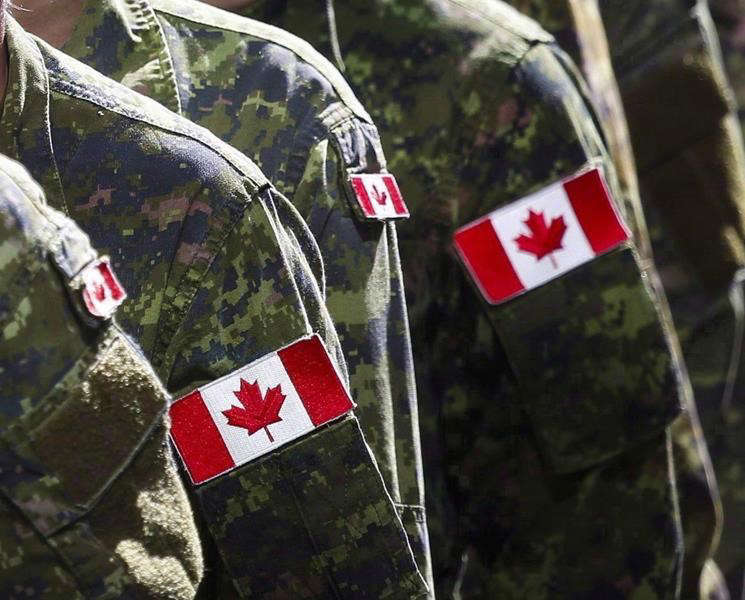
From the Frontier Centre for Public Policy
By David Leis
Decades of underfunding and political neglect have left our military weak and unprepared
What Lt.-Gen (retired) Michel Maisonneuve (ret.) told me about Canada’s military was nothing short of alarming. He didn’t mince words—our armed forces are in dire straits. If we don’t act now, Canada will not only be unable to defend itself, but it will cease to be taken seriously by our allies, many of whom are already losing patience with our military decline.
Maisonneuve has seen firsthand what a functioning military looks like. He has served at the highest levels, working alongside our allies in NATO, and he knows exactly what Canada is failing to do. “We are no longer at the table when major defence decisions are made,” he told me. “The Americans don’t ask us what we think anymore because they know we can’t contribute.” That is a stunning indictment of where we now stand—a country that was once respected for its ability to punch above its weight militarily has been reduced to an afterthought.
The problem, as Maisonneuve laid out, is both simple and staggering: Canada doesn’t take its defence seriously anymore. The government has allowed our forces to wither. The Air Force is still buying CF-18s from the 1980s because the long-delayed F-35 procurement is years behind schedule. The Navy, once a competent maritime force, is barely functional, with no operational submarines and a fleet that is nowhere near what is needed to patrol our vast coastlines.
Meanwhile, the Army is struggling to recruit and retain soldiers, leaving its numbers dangerously low. “We have an Army in name only,” Maisonneuve said. “If we were called upon tomorrow to deploy a fully operational combat force, we couldn’t do it.”
Even more shocking is the state of readiness of our troops. A recent report found that 75 per cent of Canadian military personnel are overweight. Maisonneuve didn’t sugarcoat it:
“It’s unacceptable. We are supposed to be training warriors, not watching fitness standards collapse.” When the people entrusted with defending our country are struggling with basic physical fitness, it speaks to something much deeper—an institutional rot that has infected the entire system. Our allies have noticed. Canada was locked out of AUKUS, the military alliance between the U.S., the U.K. and Australia. “It wasn’t an oversight,” Maisonneuve explained. “It was a deliberate snub. The Americans don’t see us as a serious defence partner anymore.” That snub should have been a wake-up call. Instead, our government shrugged it off.
Meanwhile, Washington is openly questioning Canada’s value in NATO. The Americans see the numbers—Canada refuses to meet even the minimum defence spending requirement of two per cent of GDP. Instead of fulfilling our obligations, we offer up empty promises and expect others to pick up the slack.
Maisonneuve is blunt about what needs to be done. “First, we need to fully fund the military—and that means not just hitting the NATO target but exceeding it. Our allies spend real money on their defence because they understand that security is not optional.” He suggests Canada should aim for at least 2.5 per cent of GDP, not just as a show of commitment but as a necessity to rebuild our capabilities. Beyond money, Maisonneuve argues that military culture must be restored.
“We’ve allowed ideology to creep into the ranks. The military’s primary function is to defend the nation, not to serve as a social experiment,” he said. “We need to get back to training warriors, not worrying about whether we’re ticking the right diversity boxes.” He believes a return to a warrior ethos is essential— without it, the military will remain directionless.
Procurement is another disaster that Maisonneuve insists must be fixed immediately. “We’ve spent years dithering on replacing equipment, and every delay puts us further behind,” he said. The F-35 deal should have been signed years ago, but political hesitation means we won’t see a full fleet for years. The Navy urgently needs new submarines and icebreakers, especially to secure the Arctic, where other global powers, particularly Russia, are ramping up their presence.
The biggest issue, though, is manpower. “We need to rebuild the forces, period,” Maisonneuve told me. “That means recruiting, training, and retaining soldiers, and we are failing at all three.” He even suggested that Canada should consider implementing a national service requirement, a move that would not only increase troop numbers but also instill a sense of duty and responsibility in younger generations. “We used to be a country that took security seriously,” he said. “What happened?”
That’s the question, isn’t it? What happened to Canada? How did we go from being a country that contributed meaningfully to global security to one that can’t even defend itself? The reality is that successive governments have let this happen—first by neglecting funding, then by letting bureaucracy suffocate procurement, and finally by allowing the core purpose of the military to be diluted.
Maisonneuve is clear: Canada must act now, or it will cease to be taken seriously.
David Leis is President and CEO of the Frontier Centre for Public Policy and host of the Leaders on the Frontier podcast
-
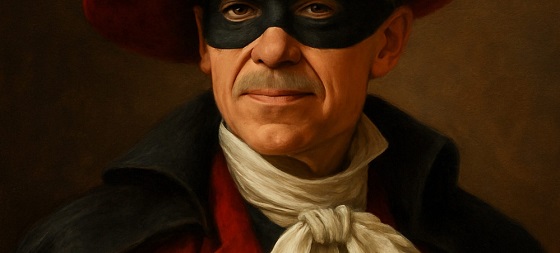
 2025 Federal Election22 hours ago
2025 Federal Election22 hours agoMark Carney: Our Number-One Alberta Separatist
-

 2025 Federal Election1 day ago
2025 Federal Election1 day agoNine Dead After SUV Plows Into Vancouver Festival Crowd, Raising Election-Eve Concerns Over Public Safety
-

 Opinion2 days ago
Opinion2 days agoCanadians Must Turn Out in Historic Numbers—Following Taiwan’s Example to Defeat PRC Election Interference
-
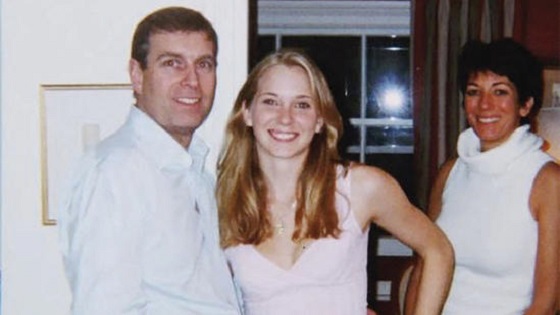
 International1 day ago
International1 day agoJeffrey Epstein accuser Virginia Giuffre reportedly dies by suicide
-

 International2 days ago
International2 days agoHistory in the making? Trump, Zelensky hold meeting about Ukraine war in Vatican ahead of Francis’ funeral
-

 C2C Journal2 days ago
C2C Journal2 days ago“Freedom of Expression Should Win Every Time”: In Conversation with Freedom Convoy Trial Lawyer Lawrence Greenspon
-

 2025 Federal Election1 day ago
2025 Federal Election1 day agoColumnist warns Carney Liberals will consider a home equity tax on primary residences
-
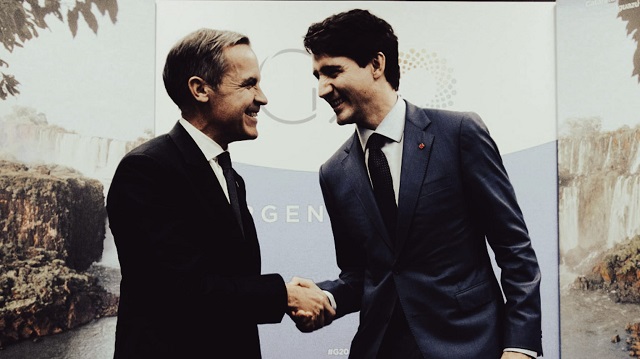
 2025 Federal Election14 hours ago
2025 Federal Election14 hours agoCanada is squandering the greatest oil opportunity on Earth

